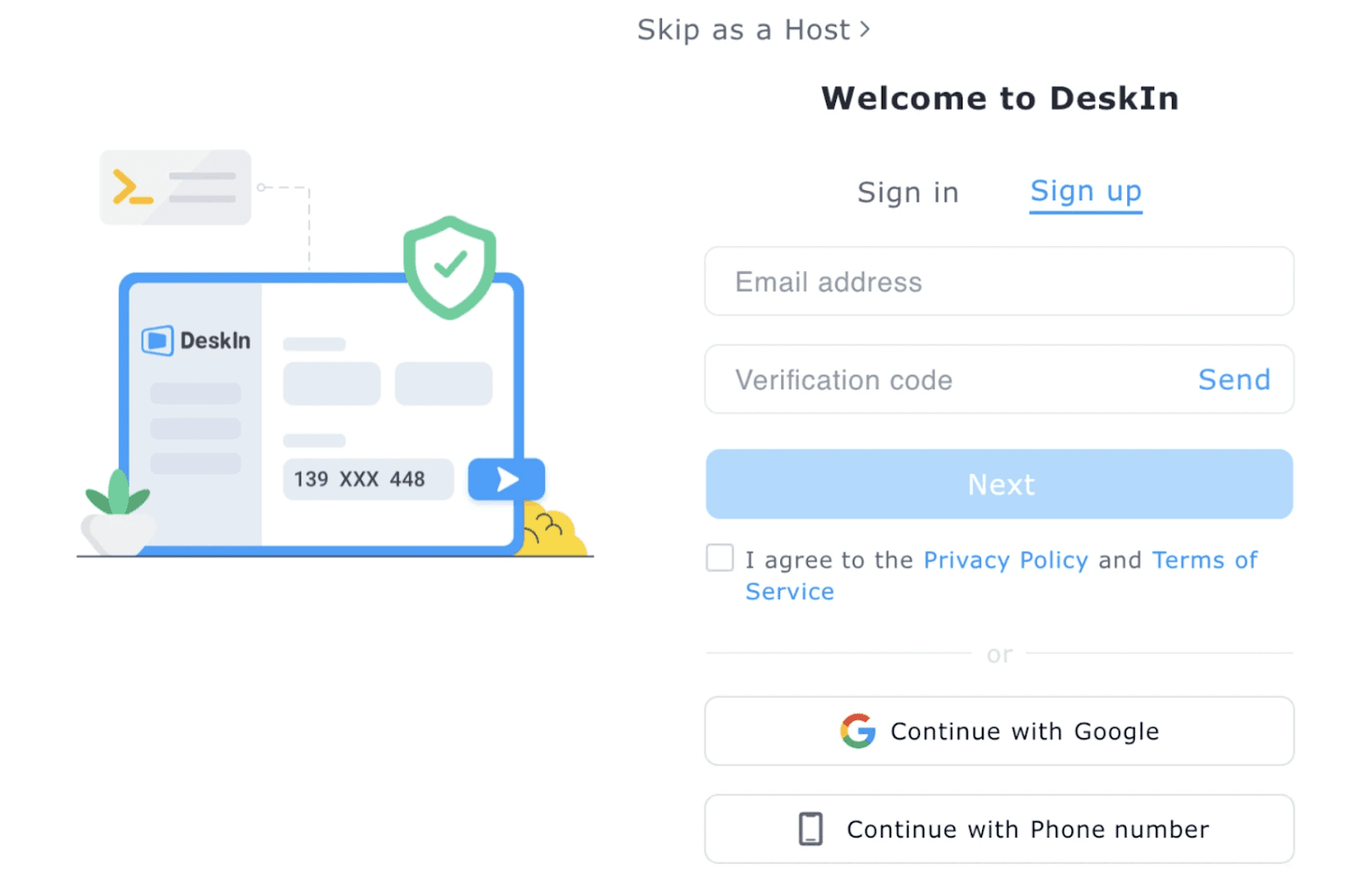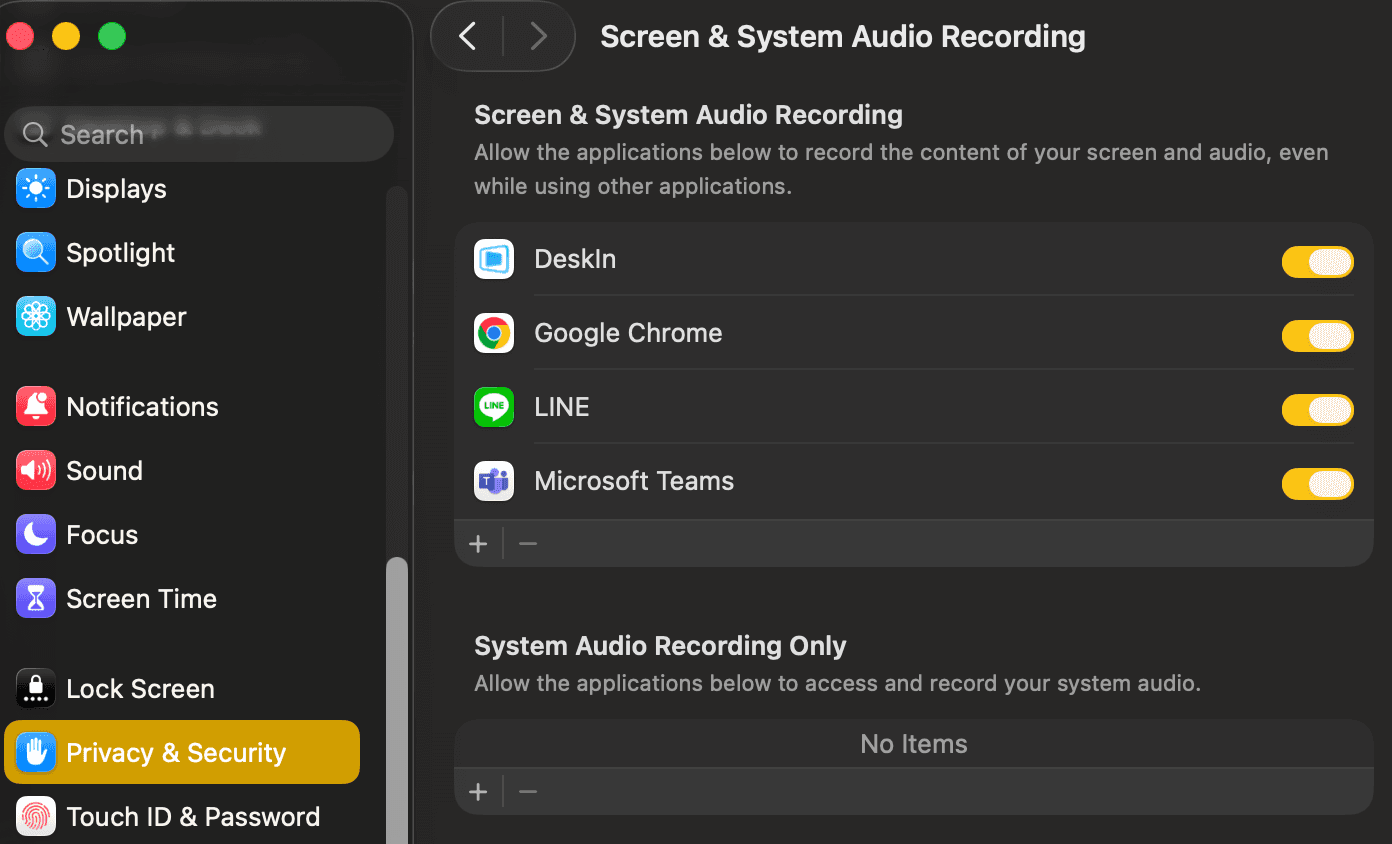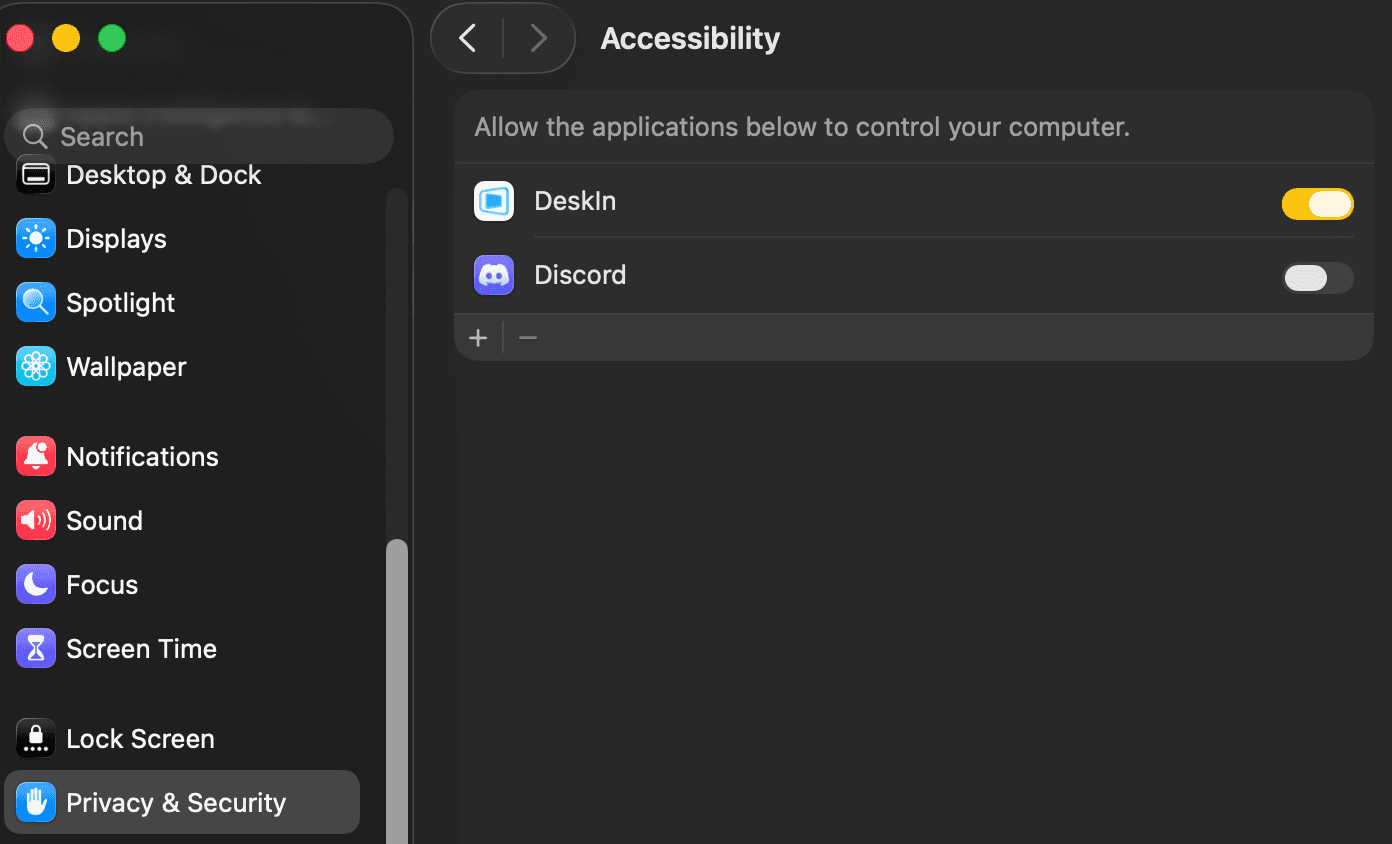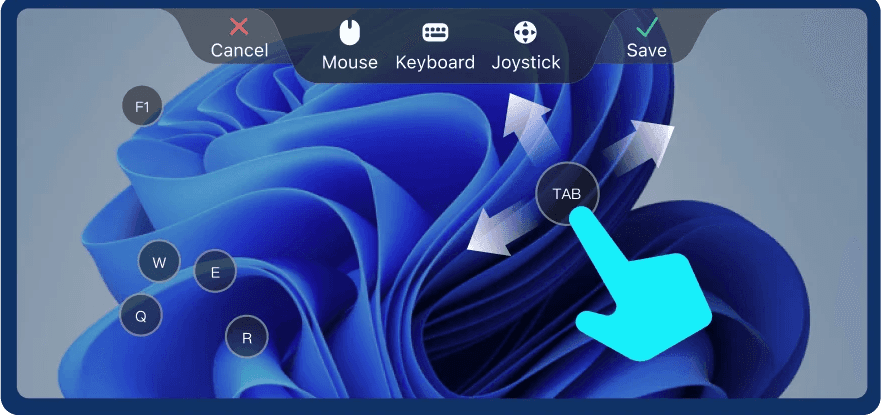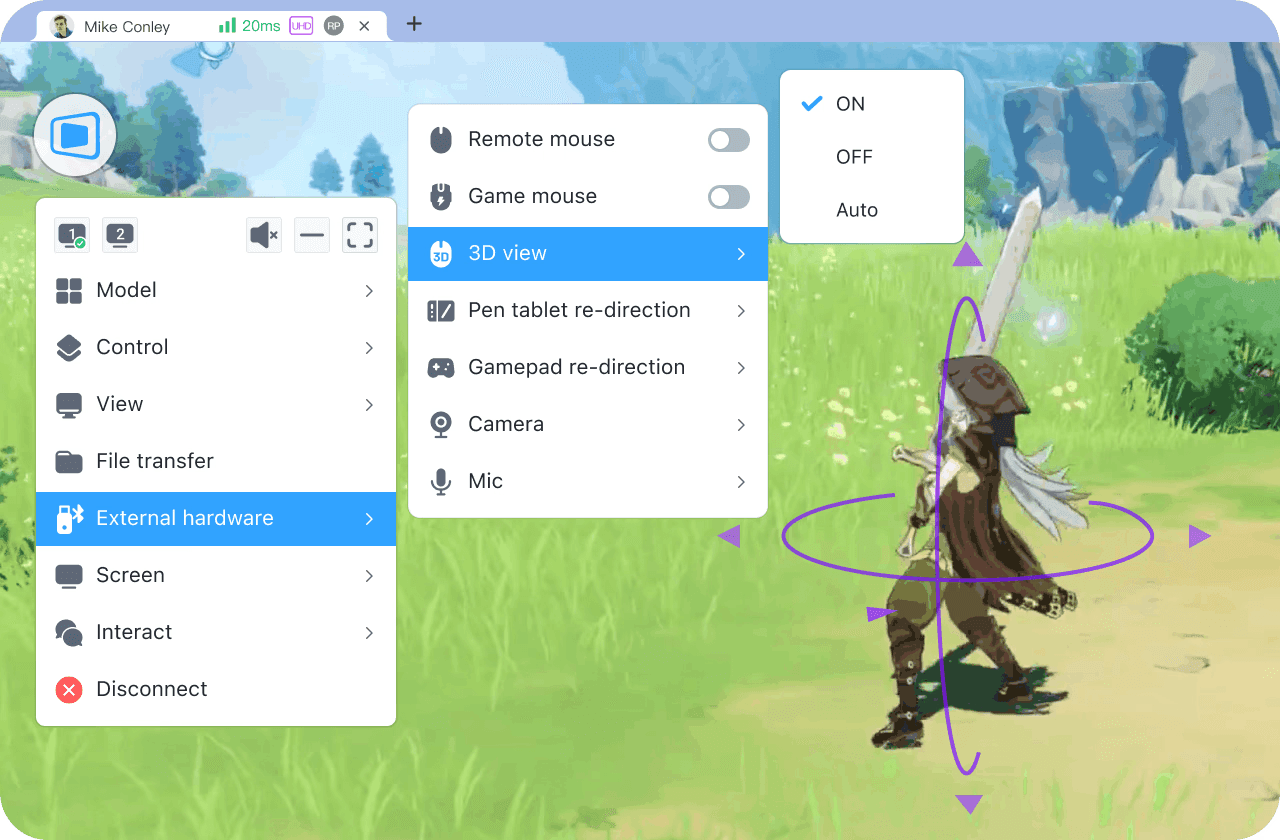In today’s interconnected world, having a reliable remote access solution isn’t a luxury anymore; it’s baseline survival. Whether you’re gaming from your phone, editing your portfolio on an iPad, fixing your parents’ laptops (again), or simply trying to access files on your work PC while sipping coconut water on the beach, remote access has become an everyday tool we can no longer live without.
But there’s the real question:
How can one piece of technology serve gamers, creatives, IT pros, students, remote workers, and everyday families, all with completely different needs?
That’s where DeskIn comes in. A next-gen remote desktop tool that turns any device into your control center. It’s fast, flexible, intuitive, and powerful, but most importantly, it adapts to who you are and how you work.
Let’s break down how different types of users benefit from DeskIn’s modern, full-stack remote access software.

What Is a Remote Access Solution?
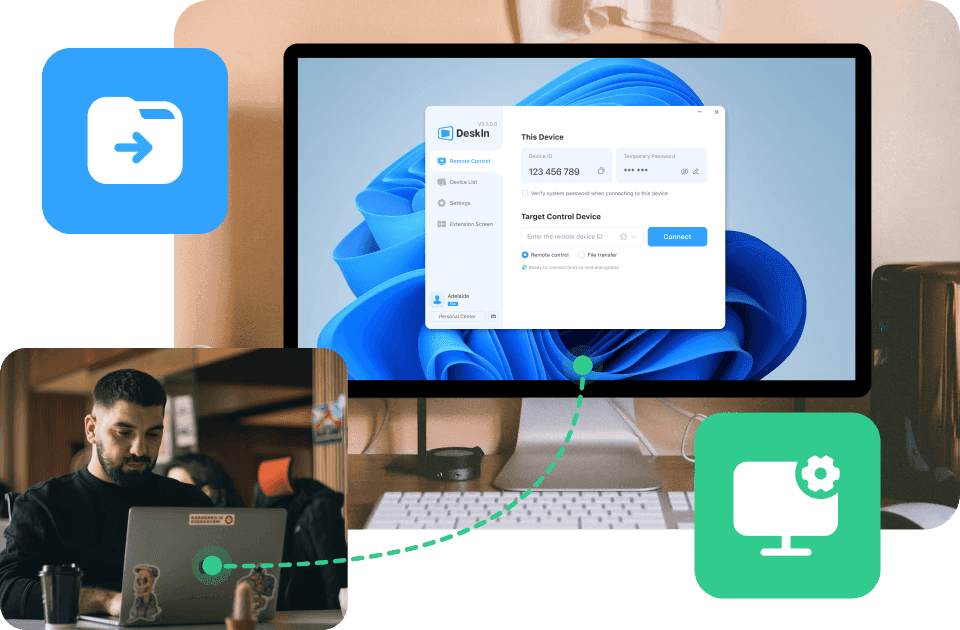
A remote access solution is a technology that lets you connect, access, view, and control another device, computer, tablet, or smartphone from anywhere. Imagine bringing your entire desktop around like it’s in your pocket. That’s the essence of remote PC access.
Typical use cases include:
Working from home and accessing office desktops
Helping family troubleshoot their devices
Pulling a file from your computer while traveling
Playing PC games on your mobile
Using a tablet as an extended screen
Running heavy software on a low-power laptop
Providing IT remote support far away
Sharing screens for teaching, collaboration, or presentations
But here’s the important thing: Different users need different things from a remote desktop software.
Gamers want high FPS. Designers want true color. IT teams want full-control tools. Students want access to specific applications. Families want something simple and secure.
DeskIn bridges all these needs in one user-friendly platform: low-latency engine, high-quality streaming, no paywall restrictions, and advanced features across every device.
Let’s explore how.

How Different Users Benefit from DeskIn’s Remote Access Solutions
For Gamers: Play Without Limits
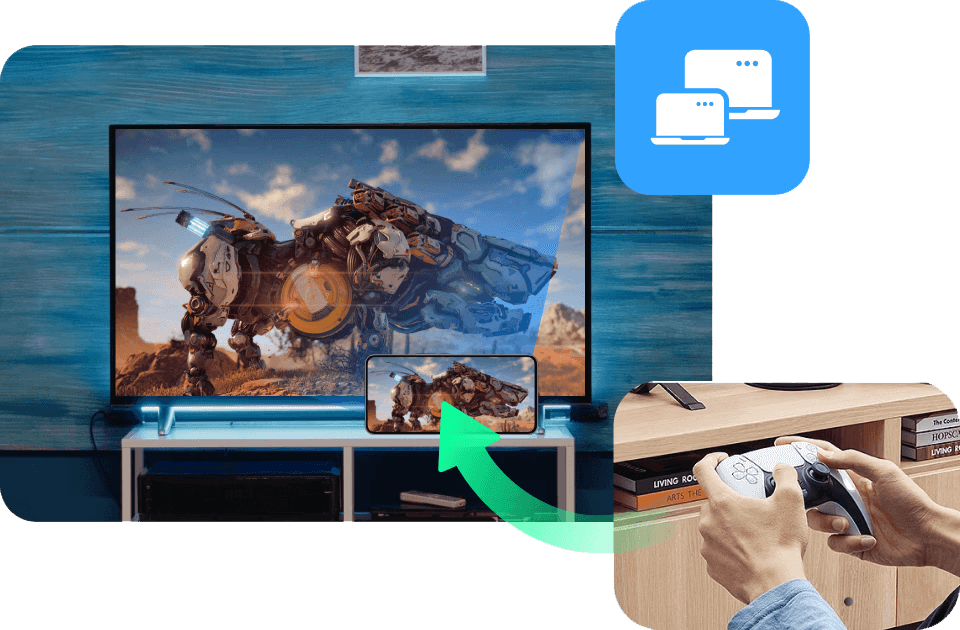
If you’re a gamer, you already know the struggle: you finally have time to play, but you’re not near your gaming PC. Or worse, you are near it, but the TV is occupied, your desk is uncomfortable, or your rig isn’t even in the same city. Add classic issues like lag, frame drops, and poor compatibility from cloud platforms, and the fun disappears fast.
That’s where DeskIn becomes a game-changer, literally.
With Deskin’s Remote Game, gamers also get:
Adapt to game controller support
Smooth remote PC access for all types of games from mobile
Screen casting to bigger displays
The ability to use your mobile, tablet, and laptop as a second screen (maps, inventory, Discord, etc.)
Immersive Auto 3D view for a more lifelike gaming perspective
Play from the couch, airport, or your grandma’s house. DeskIn makes remote gaming feel local.
Read More:
For Designers: Create Seamlessly Across Devices
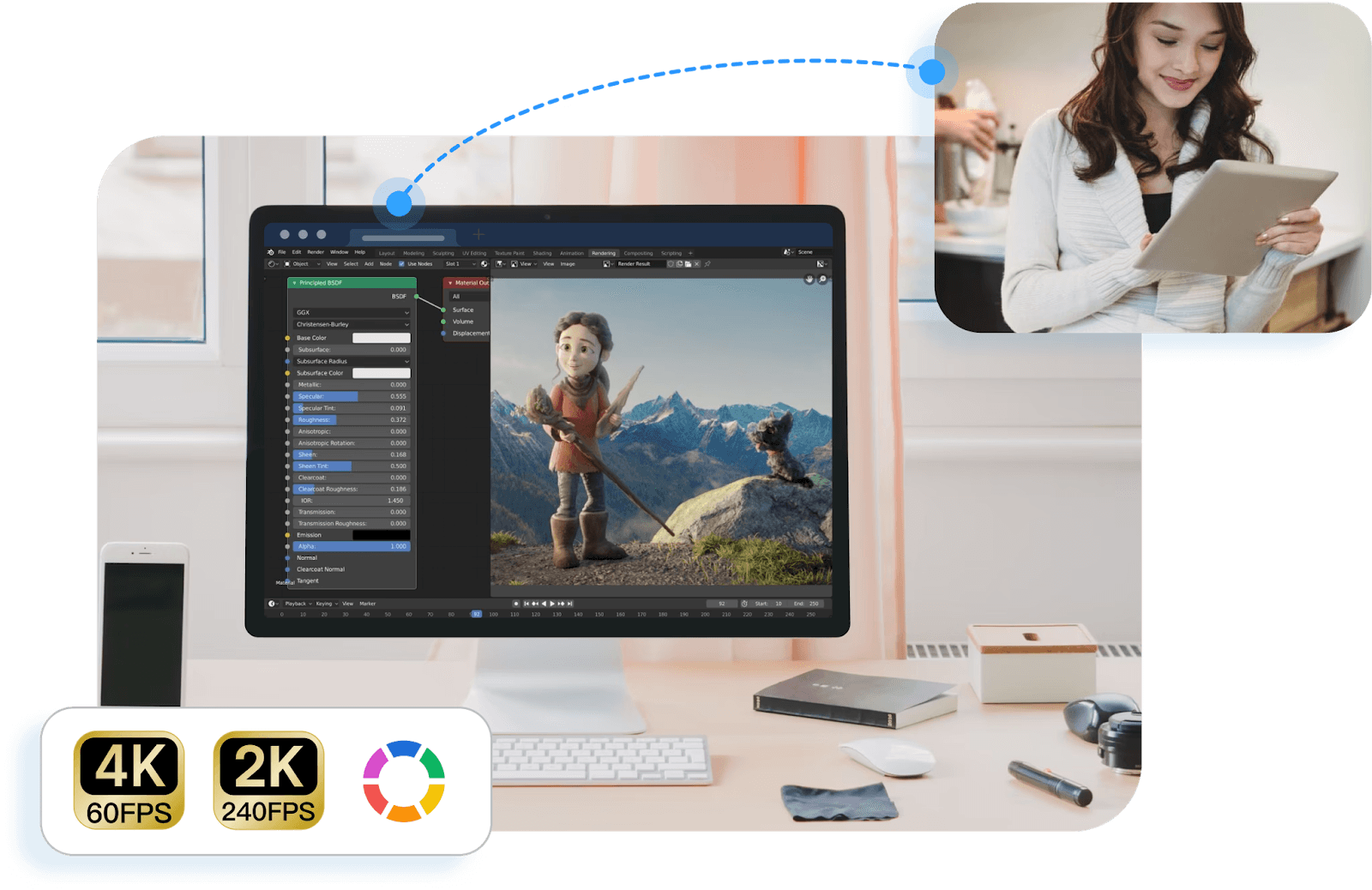
Designers live and breathe precision. You need accurate colors, responsive pen input, and the freedom to work on massive project files: none of which most traditional remote desktop software can handle well.
With DeskIn’s Remote Design, creatives can:
Use an iPad as a second screen or digital drawing tablet
Draw with pressure sensitivity and minimal latency
Share their screen for real-time client or team collaboration
Chat, annotate, and revise designs instantly
Transfer huge assets between devices, no size limits, no compression
Whether you’re designing a logo, editing a 4K video, or retouching photos on the go, DeskIn keeps your creative flow seamless across all your devices.
Read More: Remote Work Software for Creatives: True Color, Real Speed
For Remote Workers: Work from Anywhere Like You’re at Your Desk
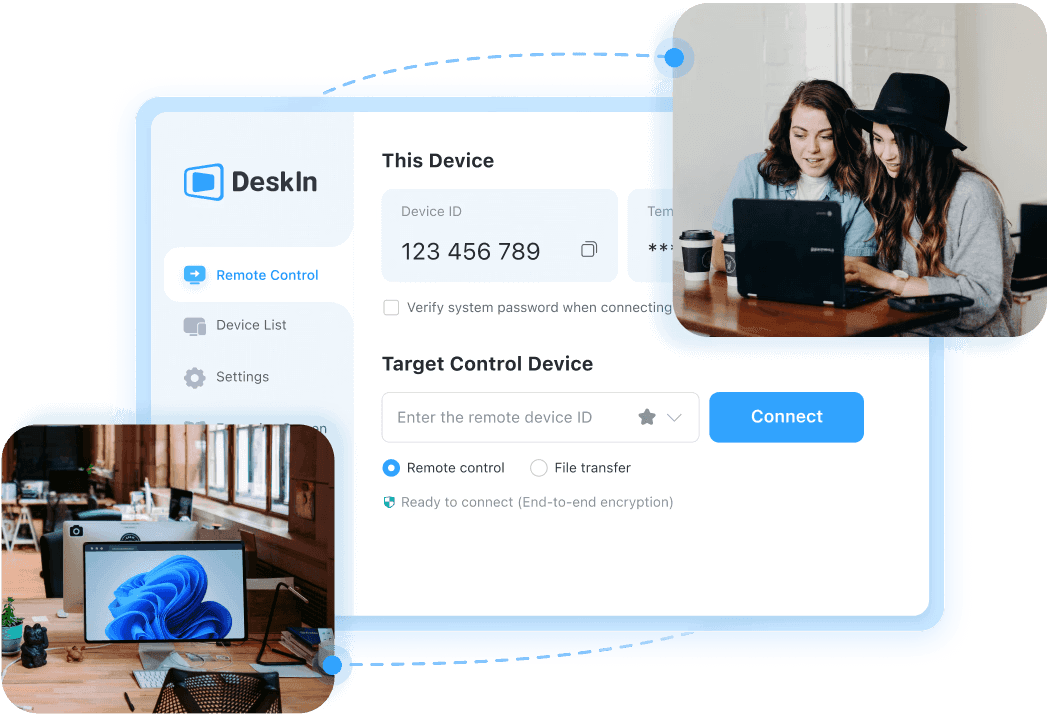
Remote work is easy, until you realize your spreadsheet, accounting software, or internal system lives on your office PC. DeskIn turns any device into a portable workstation through secure, fast, and smooth remote PC access.
With DeskIn’s Remote Work, you can:
Access your work computer securely from home
Transfer files instantly using drag-and-drop
Run business applications with full performance
Log in to systems or tools only available on office networks
Wake-on-LAN for powering up your office PC from anywhere
Built-in voice chat for meetings
Hassle-free screen extension for multitasking
For IT Support & Technicians: Resolve Issues in Real Time

IT technicians know the pain of long commutes, on-site visits, or trying to guide non-tech users over the phone. DeskIn wipes out that frustration by giving IT teams a full command center for remote troubleshooting.
Through DeskIn’s Remote Support, support teams can:
Take full-screen control of any device
Access Task Manager, terminal, and system tools
Reboot, shutdown, or Wake-on-LAN remotely
Use unattended connections for always-available devices
Group devices and switch instantly between them
For Everyday Users – Simplify Daily Tech Tasks

Not everyone needs advanced IT tools; sometimes you just need to fix something quickly. DeskIn makes everyday tech life easier for families, casual users, and anyone who wants to “get things done remotely.”
Imagine these scenarios:
Helping your parents install a printer
Fixing your kid’s tablet while you’re out
Retrieving a file from your home computer during a meeting
Using an old phone as a baby or pet cam
Sending photos from Android to iPhone (or vice versa) without drama
It’s the everyday, no-stress remote desktop tool your household didn’t know it needed, but will love once they try it.
For Students & Teachers — DeskIn Makes Remote Learning Actually Productive
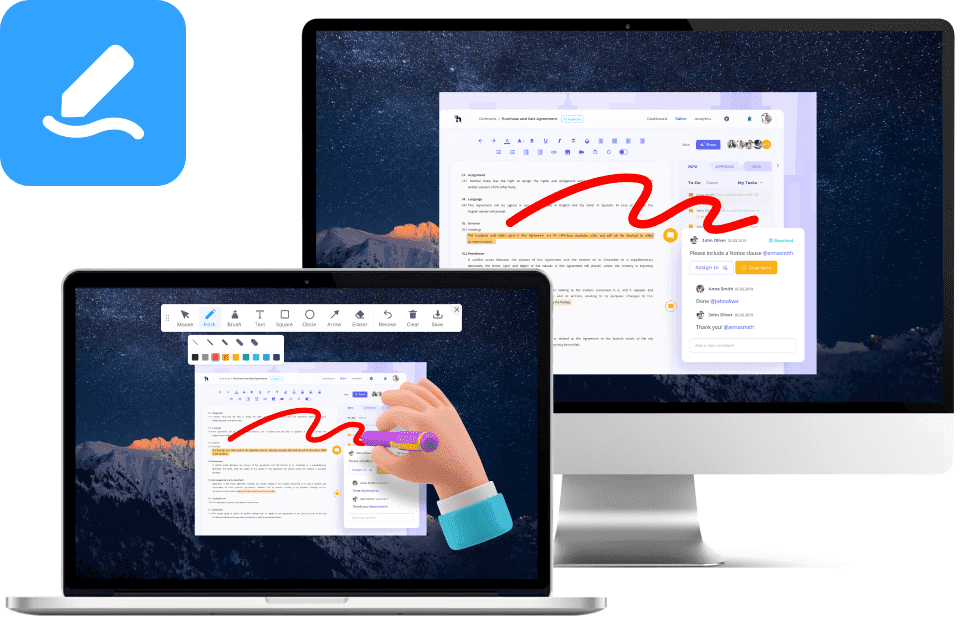
Cloud tools like Canva, Docs, and Google Classroom are great, but they don’t replace full computer access. Students often need access to software that schools don’t provide in the cloud: AutoCAD, Adobe Suite, MATLAB, Unity, SPSS, and more. Teachers also need to demonstrate real software, run simulations, and review student work beyond PDFs and screenshots.
DeskIn fills that gap with powerful, classroom-grade remote desktop software:
Access school lab computers from home
Run heavy apps without owning a powerful PC
Use smooth, low-latency screen sharing for teaching
Collaborate in real time with remote control and annotations
Let students join lessons from any device
Cloud tools assist learning. DeskIn elevates it. With true remote file access, fast streaming, and high-quality visuals, students and educators get the full computer lab experience from anywhere.
For Families — DeskIn Solves Every “Tech Problem” in Minutes

Here’s the truth: cloud tools are great for sharing documents, but they can’t fix devices. When your parents call to say “something popped up on my screen,” Google Drive can’t help. DeskIn can.
DeskIn gives families real, hands-on remote PC access so you can:
Fix relatives’ computers
Install their apps
Remove unwanted pop-ups
Adjust settings
Help them find files
Transfer documents for them
Instead of describing steps verbally (“Click the thing…no, not that thing!”), you can just take over their screen and solve it in seconds.

Why Choose DeskIn for Remote Access?
Instead of relying on outdated, slow, or restricted platforms, users get modern remote desktop software that adapts to different devices, workstyles, and performance demands. DeskIn is powerful enough for advanced users yet simple enough for beginners: a rare balance in the world of remote access software.
Core Features That Benefit Every User
Cross-platform compatibility (Windows, Mac, iOS, Android)
DeskIn connects every major OS seamlessly, ensuring smooth remote PC access whether you’re switching between your phone, tablet, laptop, or desktop.
Ultra-low latency (as low as 40ms)
With the ZeroSync® Engine, DeskIn keeps interactions instant, perfect for gaming, design, or real-time troubleshooting.
High performance (4K60FPS, 2K144FPS)
Enjoy crisp visuals and buttery-smooth streaming that outperforms many traditional remote desktop tools.
Secure 256-bit encryption + privacy screen
Advanced security ensures your sessions, files, and private data are fully protected during every connection.
Fast, reliable file transfer
Move files between devices instantly, making remote file access as simple as drag-and-drop.
Built-in chat, voice call & whiteboard
Communicate clearly during support sessions, collaboration, or remote teaching.
Wake-on-LAN
Power on your work or home PC from anywhere, even if it’s asleep.
Unattended Access
Perfect for IT support, remote work, or accessing personal devices without needing someone on the other end.
Remote printing
Print documents from your remote computer to your local printer instantly.
Gaming features
High FPS, low latency, controller support, and a smooth streaming pipeline make DeskIn a top-tier option for remote game sessions.
External device adaptation
Use your tablet as a drawing surface, your phone as a controller, or attach peripherals seamlessly across devices.
Screen management modes
Choose between screen extension, mirroring, or a virtual screen to boost multitasking and productivity on any setup.
DeskIn doesn’t lock advanced features behind subscriptions or device limitations. Everything from high-performance streaming to full remote desktop tool capabilities is included.
Try DeskIn free and unlock total control of your devices, anytime, anywhere.

Get Started with DeskIn in 3 Easy Steps
Getting started with DeskIn is designed to be as simple as its powerful remote access solution capabilities. No complicated configurations, no technical setup, just instant connection across your devices.
Follow these three quick steps:
1. Download DeskIn on Both Devices
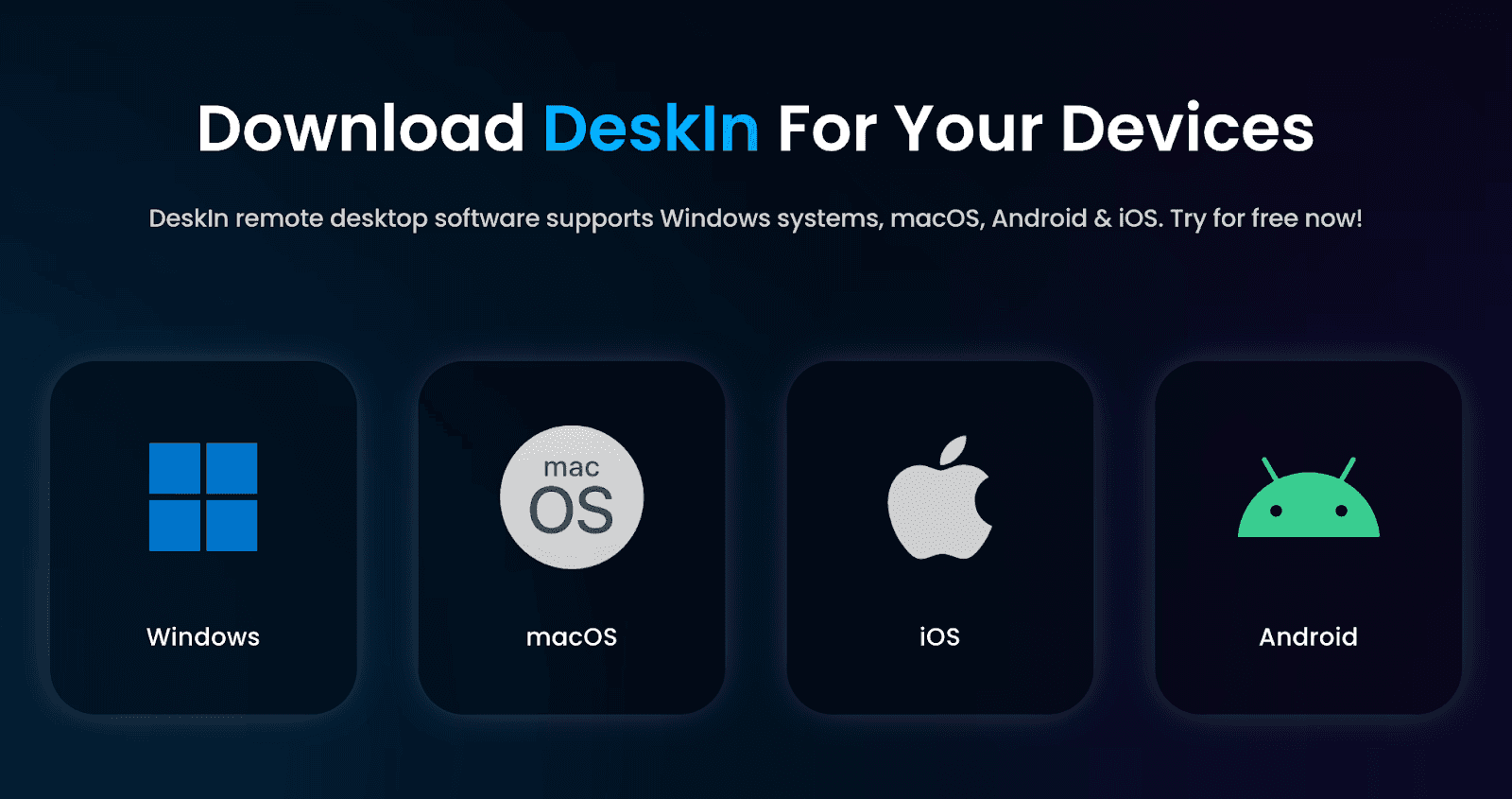
Install DeskIn on your desktop, laptop, phone, or tablet. It works across Windows, macOS, iOS, and Android for true cross-platform remote PC access.
2. Sign In to the Same DeskIn Account
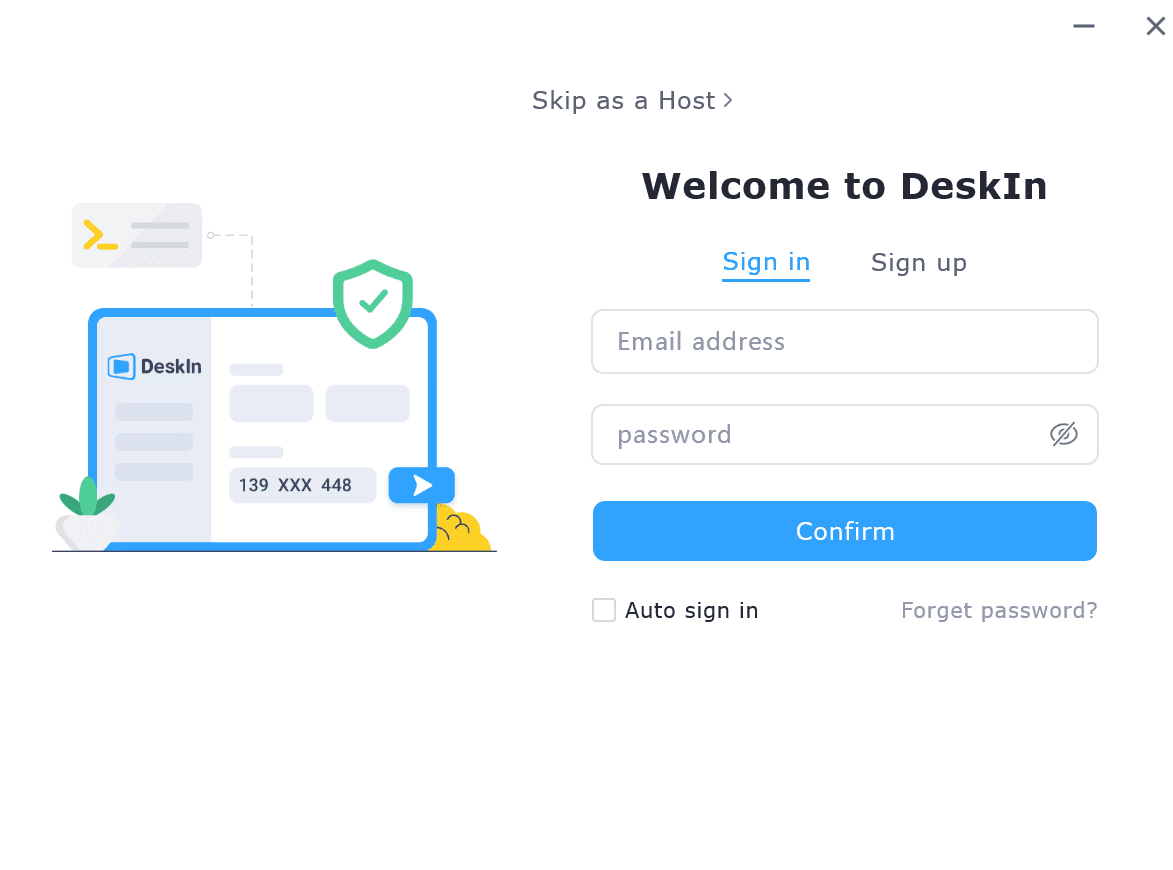
Log in using your DeskIn account so your devices sync securely and appear in your device list.
3. Enter the Remote Device’s Connect ID & Password
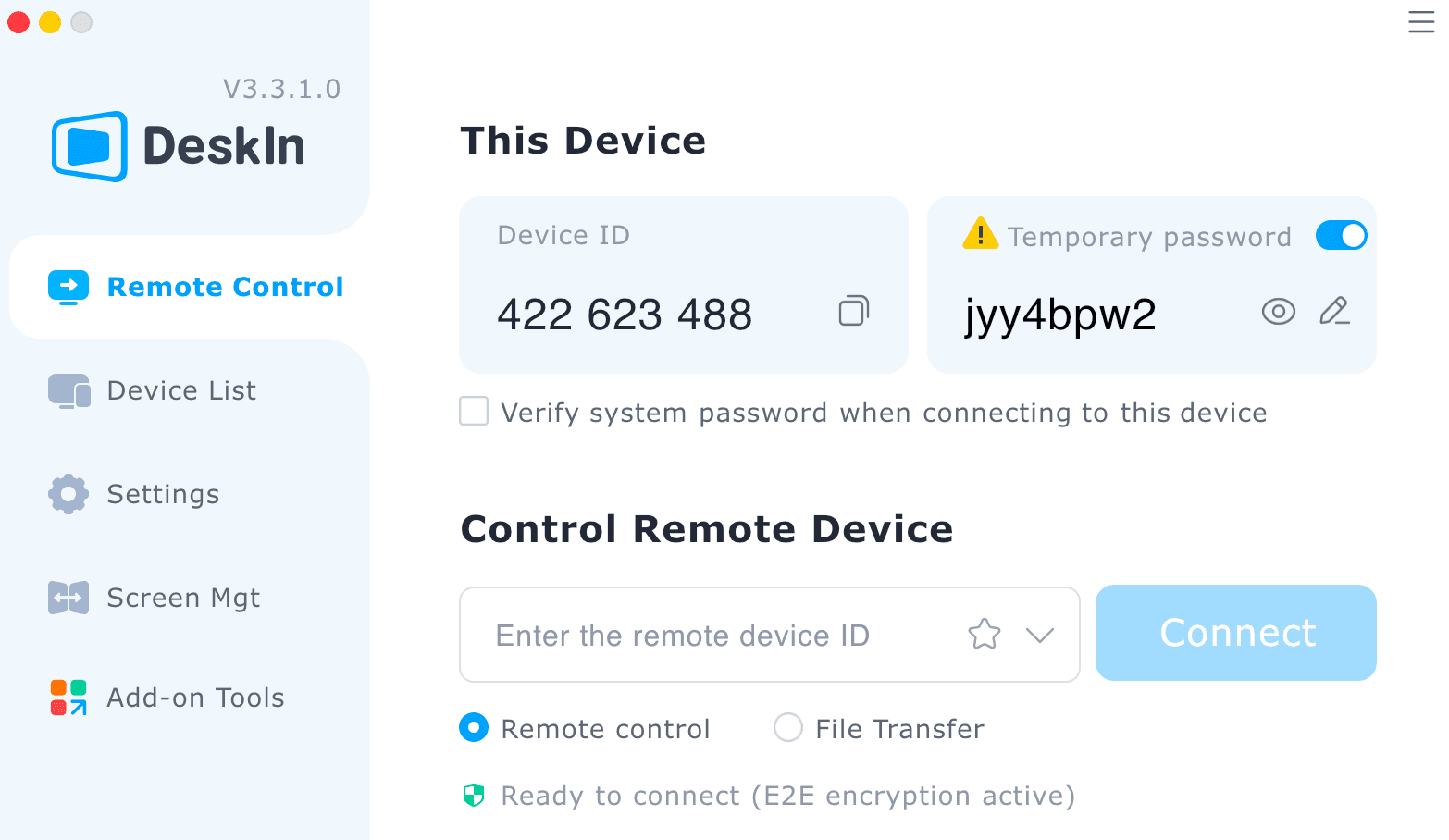
For quick sessions or assisting someone else, simply input the Device ID and temporary password shown on their device to establish a secure session.
Once connected, choose exactly what you want to do:
Available Options
Remote Control — Full access to the desktop for work, support, productivity, or gaming
File Transfer — Move files across devices instantly with drag-and-drop convenience
Mirror Screen — View the remote screen in real time on any device
Screen Extension — Use your phone or tablet as an extended monitor for multitasking
Built-in Tools — Use draw mode, whiteboard, camera view, and chat for clearer communication
Customizable Settings — Adjust resolution, bitrate, and frame rate to match your network and performance needs

FAQ
Is DeskIn secure for remote work and sensitive files?
Yes. DeskIn uses 256-bit encryption, device authorization, and privacy screen mode to protect your data. Every remote session is fully encrypted, making it safe for work, IT support, and confidential file access.
Can DeskIn be used for gaming?
Absolutely. DeskIn is optimized for high-performance remote PC access, supporting up to 4K60FPS, low latency (as low as 40ms), controller input, and smooth streaming: perfect for remote gaming or playing PC titles on your mobile or tablet.
Does DeskIn work across different operating systems?
Yes. DeskIn is fully cross-platform, supporting Windows, macOS, iOS, and Android. You can connect and control any combination of devices with ease.
What can I do once connected to a remote device with DeskIn?
You can remotely control the device, transfer files, mirror screens, extend displays, access cameras, use built-in whiteboard tools, adjust resolution/frame rate, and even power on the device via Wake-on-LAN, all through one remote access software.
Is DeskIn suitable for IT support and managing multiple devices?
Yes. DeskIn includes powerful IT support features such as unattended access, device grouping, task manager/terminal access, multi-screen monitoring, and built-in chat/whiteboard tools for real-time troubleshooting.
Do I need to pay to use advanced DeskIn features?
No. Unlike many remote desktop tools, DeskIn provides all advanced features, screen extension, high FPS streaming, file transfer, Wake-on-LAN, and more, completely free with no time limitation or hidden fees.
Simplify Remote Access with DeskIn
DeskIn isn’t just another remote access solution: it’s a complete, user-focused platform built to adapt to how you work, play, create, and support others. From gamers and designers to remote workers, students, and families, it delivers fast speed, sharp visuals, cross-device compatibility, and easy-to-use features that make remote access feel effortless.
With secure encryption, a simple setup, and no-cost advanced features, anyone can get started in minutes and enjoy smooth remote PC access from anywhere.
Ready to take full control of your devices, no matter where you are? Try DeskIn’s remote access solutions, and see the difference.

































